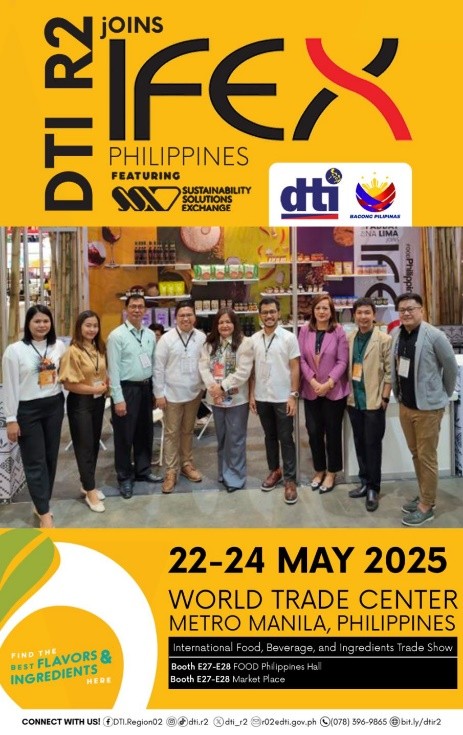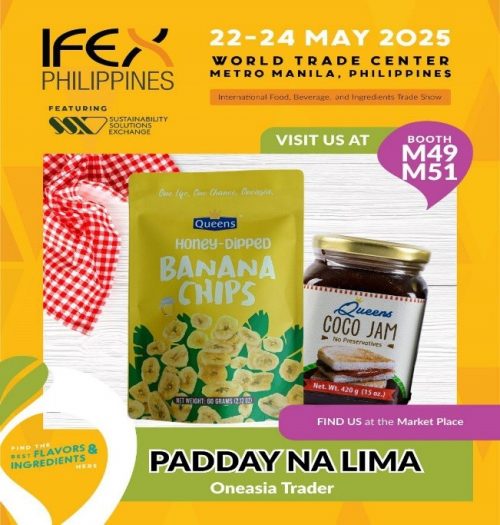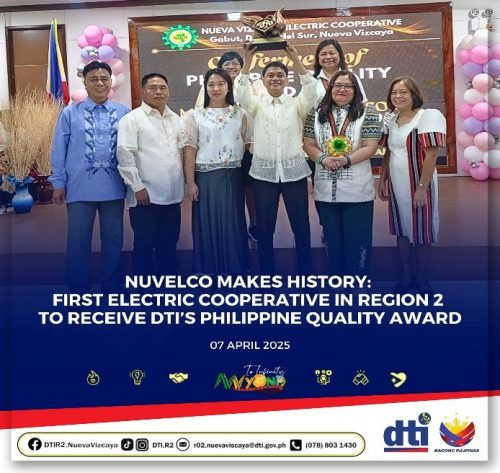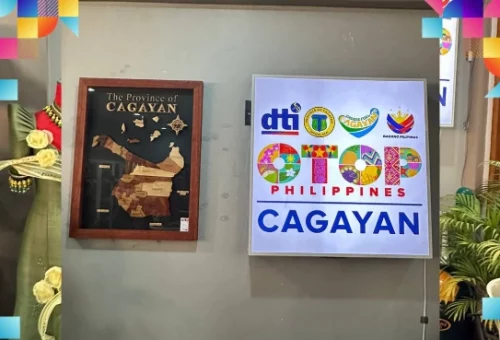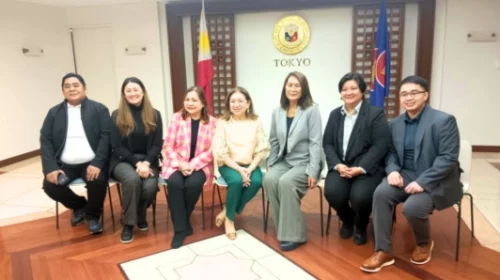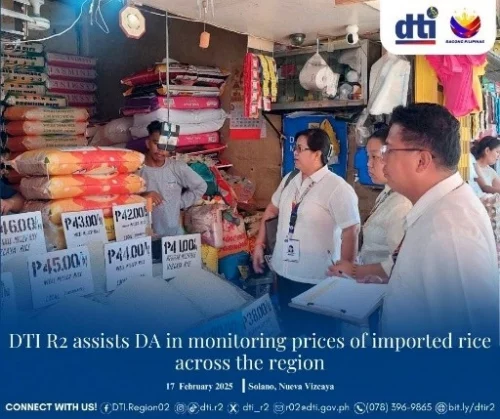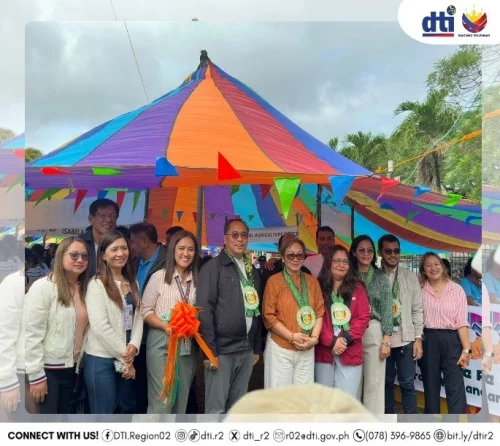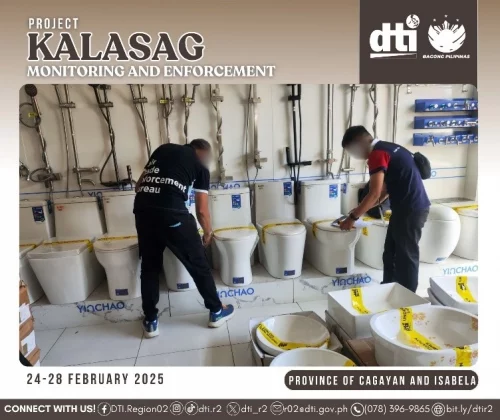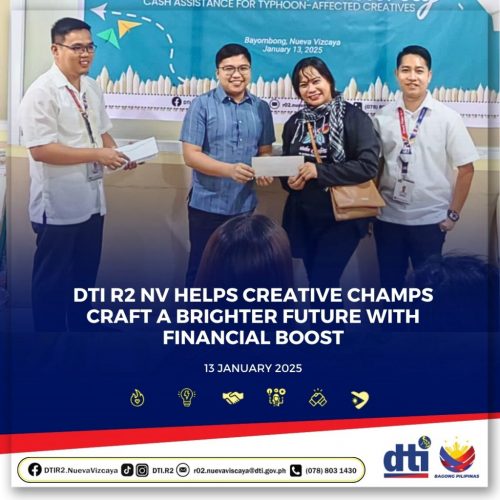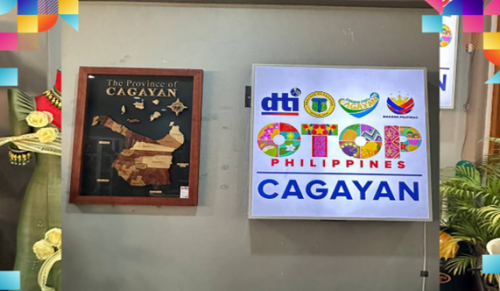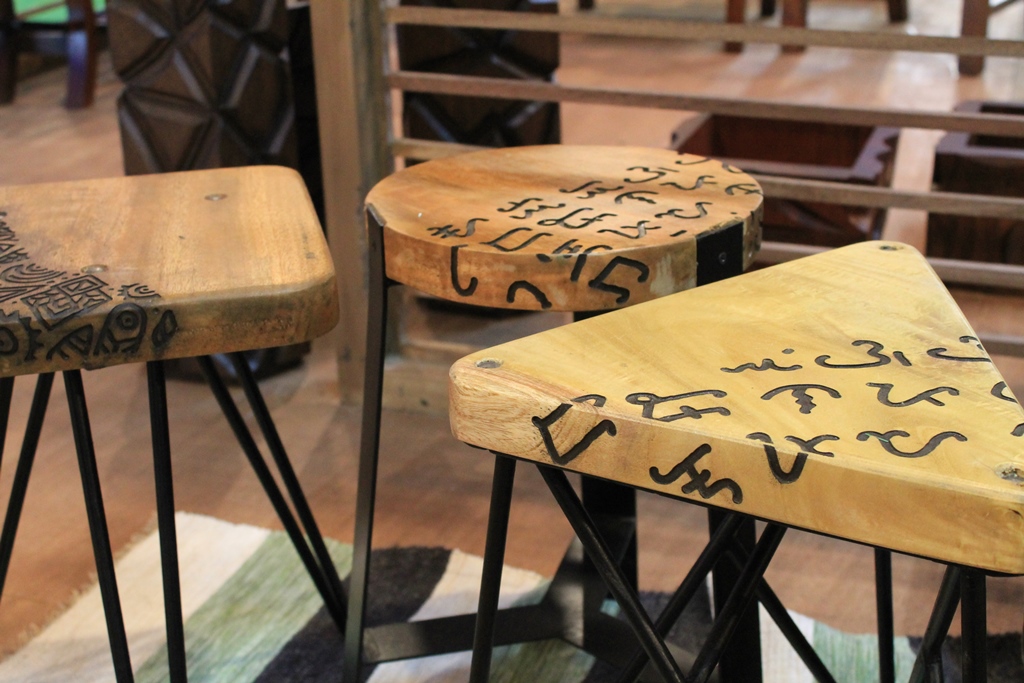[su_tabs][su_tab title=”About”]
DTI-02 or DTI-Cagayan Valley is composed of five provinces—Batanes, Cagayan, Isabela, Nueva Vizcaya, and Quirino; and four cities—Cauayan, Tuguegarao, Ilagan, and Santiago. The region is hailed as the “Tilapia Capital of the Philippines” The main crops are rice, corn, and tobacco. Fishing is prevalent in the coast of Cagayan, Isabela, Batanes and Magat Dam in Isabela.
The region is also involved in livestock production of cattle, hog, carabaos and poultry. Other livelihood of the region involves furniture making of rattan and other indigenous materials which are for export.
[/su_tab][su_tab title=”News”]
[/su_tab][su_tab title=”Regional Profile”]
Region II or the Cagayan Valley Region is strategically located on the northeastern part of mainland Luzon. Its proximity to the East Asian countries is a given endowment that makes it not only a natural gateway for trade and investments but also a virtual link to other growth corridors.
The region abounds with natural resources and development potentials that consist of rich agriculture areas, forest lands and grass lands, minerals and marine resources. It is the fourth (4th) largest region of the country accounting for about 9% of national land area.
REGIONAL VISION (2001-2025)
“A Region of world class, empowered and productive citizenry with competitive agri – industrial economy, modern infrastructure, responsive basic services and well-managed eco-system in peaceful and orderly communities at one with God, among themselves and with the rest of the world.”
REGIONAL DEVELOPMENT ROLE
“Open growth area and international trade and industrial partner of the East Asian Global Economy.”
QUICK FACTS
|
Provinces: Batanes, Cagayan, Isabela, Nueva Vizcaya, Quirino
Land Area: 2,683,758 hectares
City/Towns/Barangays:
Tuguegarao City, Cagayan
Cauayan City, Isabela
Santiago City, Isabela
90 Municipalities
2,317 Barangays
Population (Census 2007): 3,051,487
|
Population Density (Census 2007): 114/sq. km.
Labor Force: 1,429,000 Employment Rate: 93.7%
Literacy Rate: 92.54%
Language/Dialect: English, Filipino, Ilocano, Ybanag, Itawes, Malaweg, Gaddang, Isinay, Ivatan, Visaya
Consumer Price Index (Ave. 2011): 172.00
Inflation Rate (Ave. 2011): 5.26
|
PROVINCIAL PROFILE
BATANES
Batanes Islands lies at the tip of the Philippines, where the Pacific ocean merge with the South China Sea. It is 270 km north of Aparri, the nearest point in Luzon, about 8000 km from Manila and 224 km from the southern tip if Taiwan. This province is bounded by the Bashi Channel on the south, the Philippine Sea/Pacific Ocean on the East and the South China Sea on the West.
Owing to its high potential for large-scale commercial production of fish and fishery products on top of its pristine beauty and unique cultural heritage, Batanes shall be the region’s “Marine Fishery and Eco-Tourism Core”.
Salient Features
Basic Facts
|
Capital: Basco
Towns: Basco, Mahato, Ivana, Uyugan, Sabtang, Itbayat
Barangays: 29 Barangays
Classification: 4th Class
Land Area: 20,928 has.
Climate: Warm from March to May, Rainy from June to August, Windy from September to November; Cool from December to February
|
Population (Census 2007): 15,974
Population Density (Census 2007): 76 per sq. km.
Labor Force: 9,000
Employment Rate: 97.6%
Literacy Rate: 97.4 %
Language/Dialect: Ivatan, Filipino, English, Ichbayaten
|
Priority Investment Areas
A. Eco-Tourism Industry
CAGAYAN
Cagayan straddles the top northeastern portion of the Philippine archipelago. Sea waters bound its northern side (Babuyan Channel) and eastern flank (Pacific Ocean). To its south lies Isabela province, continuing its flat profile. On the west are the Cordillera mountains and the provinces of Kalinga and Apayao. Cagayan has the longest coastline in the country with 12 of its 29 municipalities located along the coast.
Cagayan province is the “Institutional, Trade and Industrial Center” in the region in view of its proximity to the Southeast Asia and being seat of industry, trade and commerce, government and educational institutions.
Salient Features
Basic Facts
|
Capital: Tuguegarao City
City/Towns: 1 City (Tuguegarao City), 28 Municipalities
Barangays: 822 Barangays
Classification: 1st Class
Land Area: 900,270 has.
Climate: Relatively dry from March to June, Rainy from July to October, Relatively cold from November to February
|
Population (Census 2007 ): 1,072,571 (Provincial), 129,539 (Tuguegarao City)
Population Density (Census 2007): 119 per sq. km.
Labor Force: 493,500
Employment Rate: 97%
Literacy Rate: 86.72%
Language/Dialect: English, Filipino, Ilocano, Ybanag, Itawes
|
Priority Investment Areas
ISABELA
Isabela is the second largest province in the country. Its vast tract of forest land can be tapped as an agro-forestry industrial area to produce at sustained level the wood requirements of prospective wood-based industries.
Considering its strategic location in the center of the region and its demonstrated strength in trade and commerce, Isabela is dubbed as the region’s “Regional Trade and Industrial Center”.
Salient Features
Basic Facts
|
Capital : Ilagan
City/Towns: Cauayan City, Santiago City, 35 Municipalities
Barangays: 1,057 Barangays
Classification: 1st Class
Land Areal: ,066,456 has.
Climate: Relatively wet from May to October, Relatively dry from November to April
|
Population (Census 2007): 1,401,495 (Provincial), 114,254 (Cauayan City), 26,244 (Santiago City)
Population Density (Census 2007): 131 per sq. km.
Labor Force: 561,000
Employment Rate: 84.70%
Literacy Rate: 95.98%
Language/Dialect: Ilocano, Ybanag, Tagalog, Palanan, Yogad, Gaddang
|
Priority Investment Areas
NUEVA VIZCAYA
In view of its location within the watersheds of the Caraballo and Cordillera mountain ranges and its distinction as the major source of fruits and vegetable in the region, Nueva Vizcaya is hailed as a “Watershed and Agro – Forestry Haven”.
Located about 268 km north of Metro Manila, the province is tagged to be the new alternative destination for outdoor and environment enthusiasts.
Salient Features
Quick Facts
|
Capital: Bayombong
Towns: 15 Municipalities
Barangays: 277 Barangays
Classification: 2nd Class
Land Area: 390,387 has.
Climate: Relatively wet from May to October, Relatively dry from November to April
|
Population (Census 2007): 397,837
Population Density (Census 2007): 102 per sq. km.
Labor Force: 239,000
Employment Rate: 94%
Literacy Rate: 91.07%
Language/Dialect: Ilocano, Filipino, English, Ifugao, Kalanguya, Isinai, Bugkalot, Kankanaey, Gaddang, Ibaloi
|
QUIRINO
Quirino’s varied and extensive territory, which lies in the headwater region of Cagayan Valley is virtually untapped and unexplored.
Located within the Sierra Madre Mountains with croplands suitable for industrial crops , Quirino is hailed as the region’s “Industrial Crops Producer and Agri-Tourism Destination”.
Salient Features
Basic Facts
|
Capital: Cabarroguis
Towns: 6 Municipalities
Barangays: 132 Barangays
Classification: 3rd Class
Land Area: 305,720 hectares
Climate: Relatively dry from January to April, Relatively wet from May to December.
|
Population (Census 2007): 163,610
Population Density (Census 2007): 54 per sq. km.
Labor Force: 48,600
Employment Rate: 93.17%
Literacy Rate: 91.51%
Language/Dialect: Ilocanos, Tagalog, Ifugaos, Ibaloi, Kankanai, Aklanos, Bontoc and Bicol, Pangasinense, Bugkalot
|
Priority Investment Areas
INDUSTRIAL PROFILE
|
1. Dairy
2. Wood
3. Bamboo
4. Rubber
5. Banana
6. Pangasius
7. Poultry
8. Cacao
9. Coconut
10. Organic Fertilizer
11. GHD (Bayong, Water Hyacinth, Pottery, Loom Weaving, Basketry, etc.)
12. Furniture
13. Coffee
|
14. Processed Food
15. Veggie Noodles
16. Citrus
17. Pineapple
18. Mango
19. Muscovado
20. Cassava
21. Metals/Metalworks
22. Ginger
23. Vegetables
24. Apiculture
25. Eco-Tourism
26. ICT
27. Education
|
PRODUCT PROFILE
• Apiculture
• Bamboo
• Banana
• Dairy
• Eco-Tourism
• Information and Communications Technology (ICT)
• Pangasius
[/su_tab][su_tab title=”MSMEs Success Stories”]
[su_accordion][su_spoiler title=”Silya”]
“For Gariel May, success is not only measured by the level of sales an enterprise reaps. It is in the sharing of happiness through works of art that smiles are created and planted in the faces of their customers”
Spouses Guillermo and Gigi Peros, both architects and natives of Aritao, Nueva Vizcaya, have a penchant for compiling building designs they personally made during their free time. This passion for design , innovation and wild creativity did not escape the attention of their neighbours and friends, that in due time they started ordering for customized furnishings for their houses, café’s, offices, resorts and the like.
Through time, the number of their clients gradually increased. This motivated them to achieve their long desired dream – to create jobs for their neighbors by venturing into the construction business.
On May 17, 2012, they formalized their construction business and registered the same with the Department of Trade and Industry (DTI) under the name “Big G Builders”. A few years later, the couple noticed that scrap materials, wood bits and metal cuttings have piled up in their warehouse. Hence, they became concerned with the disposal and treatment of the scrap items.
One day, out of imagination and curiosity, Mr. Peros converted the combinations of the scrap materials into functional stools, quote boards and sign boards. Satisfied with his work, he began to call them works of art.
In 2013, Mr. Peros was invited by the Provincial Government of Nueva Vizcaya to participate in an exhibit to which he acceded. He displayed his collection at the Provincial Museum during the 2013 Ammungan Festival. Amazed by the positive responses from the prospective guests, the spouses opened “Silya Home Furnishings” or “Silya” under the management of their daughter, Gariel May Peros.
Recognizing the potential shown in the artistry and craftsmanship of their products, the DTI – Regional Office enrolled “Silya” in the Artisan Village (AV) Product Development Program of the Center for International Trade Expositions and Missions (CITEM), in preparation for their in the Crafts of Cagayan Valley-Manila FAME last October 2015 and April 2016 editions. They participated in the “2015 Padday na Lima Regional Trade Fair” and enrolled in the “GREAT WOMEN Project 2” of DTI to keep them updated and assured of marketing prospects.
They further joined the Local for Global Exhibition of the Design Center of the Philippines at the Glorietta Mall, Makati City on March 3-4, 2016. Aside from the usual display and marketing of products, “Silya” was given the opportunity to undergo a one-on-one business consultation with design specialists who provided innovative solutions in improving productivity and marketability through materials management.
At present, “Silya” maintains a showroom in “Little Baguio” in Greenhills, Mandaluyong which caters to clients all over the Philippines.
The Peros family is immensely grateful to the opportunities provided by DTI. True enough, while the enterprise may have just joined the entrepreneurial race, they were able to penetrate a nationwide market.
For Gariel May, the measure of success is not only quantified by the level of sales an enterprise reaps. It is in sharing the happiness through works of art that smiles are created and planted in the faces of their clients.
[/su_spoiler][su_spoiler title=”Splendor in the Grass”]
“If the sight of the blue skies fills you with joy, If a blade of grass springing up in the fileds has power to move you, if the simple things of nature have a message that you understand, rejoice, for your soul is alive.”
– Elenore Duse
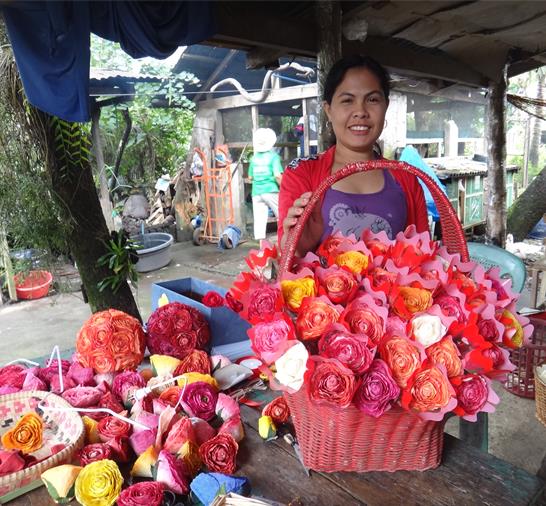
It was a business she started to augment her family’s income. Now, this woman’s entrepreneurial endeavor has grown to become an important component of her community.
Mrs. Emilia D. Fernandez or Emy to her family and friends recognized that the small income that she and her husband were earning as government employees would not be enough to provide their kids with a decent life. She faithfully prayed to have a business.
In 1998, Emy started her business on fossilized flower making. It begun when she participated in a training on Fossilized Flower Making conducted by DTI.
With the laborious procedures entailed in the training, most of the participants opted to quit except for Emy who patiently persevered and finished the training. Fueled with passion to earn additional income for her family and with her earnest desire to help others through this endeavor, she wholeheartedly embraced all the hardships of the training. With full determination she started the business and was able to convince five other women to help her operationalize the business.
In the starting years, her products were not so appealing to buyers so they had a very difficult time capturing the market. Again, she persevered and hurdled the problem with optimisim. She unceasingly prayed for Divine intervention and during those times, God always proved His goodness. “He sent me new friends (workers) to help me continue”.
Emy diligently attended various DTI initiated seminars. With the financial assistance availed, her business expanded which have benefitted many Ifugao students struggling financially.
Through the years, the products of Maddela Flowers and Crafts became a Trademark. With the help of the provincial government of Quirino and her own municipality she was able to participate in foreign trade fairs, 4 times at the CAEXPO, Manila FAME, National and Regional Fairs.
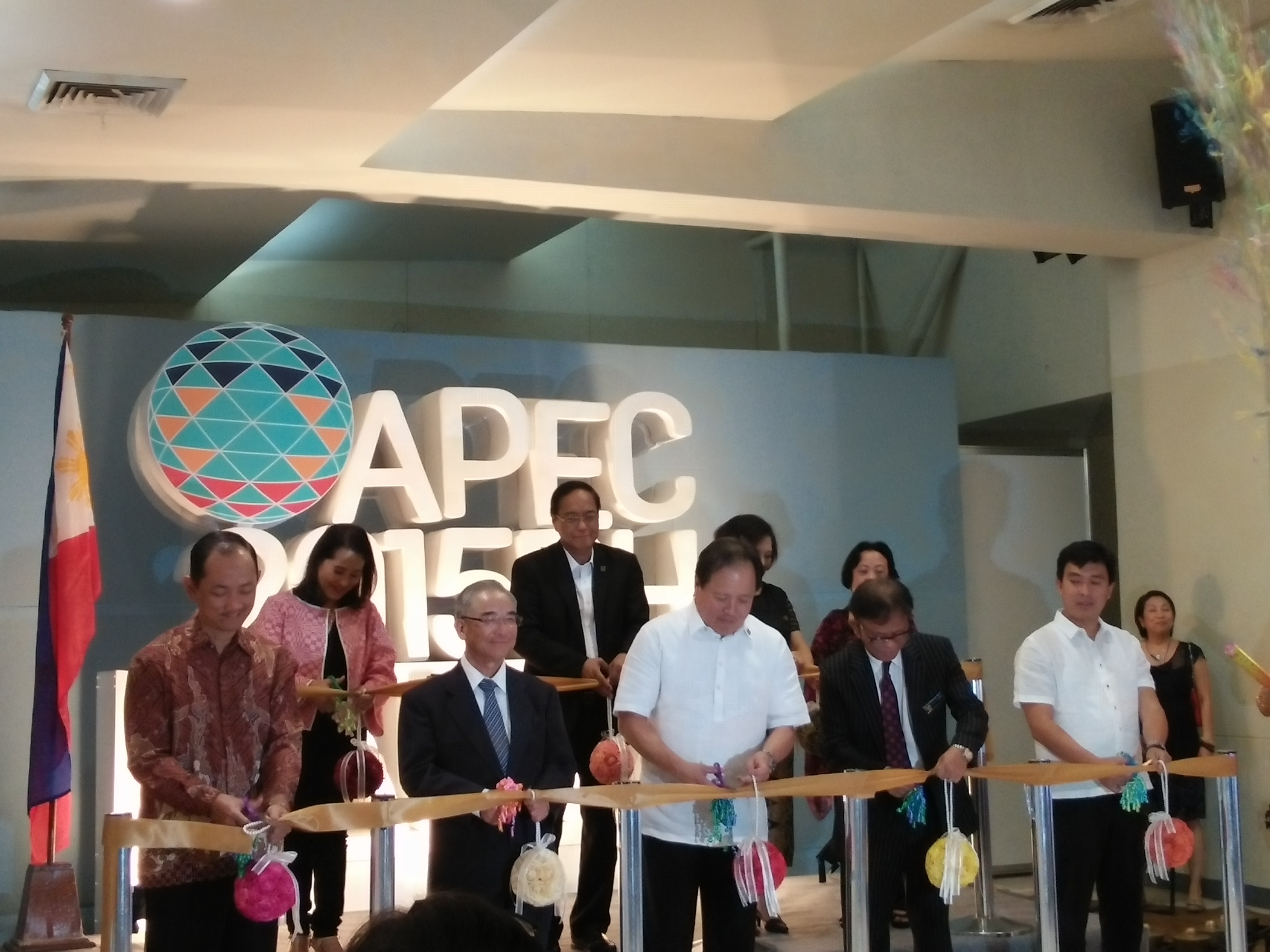
Now, she is not only reaping the fruits of her sacrifices but is giving inspiration to other people who also dream to build their own businesses in the future.
The secret of her success is putting God at the center of everything. She took problems as challenges. Through this business, she was able to send her children and her workers to school. She was able to provide the needs of her working students who could hardly buy their basic necessities. Emy‘s happiness doubles every time she was able to touch other people’s lives and help them to make their lives better.
It was a long, tiring run on a rocky and steep road. It was dangerous and risky. The success of Maddela Flowers for its 17 years of successful operation was made possible through the help of everybody especially the rural women who worked hard for it.
As Emy said, God gave me more than I prayed for through perseverance and faith in God I was able to make a great difference in everybody’s life, as she recognizes that the people are big factors for her success, “we rejoice with the simple things of nature, for it makes our soul alive.”
[/su_spoiler][su_spoiler title=”From Waste to Grace”]

The Karigo Corn Husk Fashion and Accessories Association aims to provide brighter future for its member. Continuous persistence and perseverance of the members is the key to make us grow and succeed.
For others corn husk is for animal food consumption but for the members of the KARIGO Corn Husk Fashion and Accessories of Quirino, Isabela, they value so much this unique materials because it brings cash to their families.
The project started in 2013 through the Department of Trade and Industry –CARP RO2 that brought in a project through transfer of technology/training on basic weaving techniques utilizing the use of corn husk- a new and unique raw material that are abundant in their locality.
The 5-day training led to the creation of the “KARIGO Corn Husk Fashion and Accessories Association,” composed of farmers, housewives, and out-of-school youths. The group was able to register their association and receive its certificate of registration from the Department of Labor and Employment (DOLE).
Their first few years of operation was difficult, they faced several challenges that almost led them to feel discouraged but they kept their faith, capitalized on their acquired skills, and consistently persevered to move forward despite all challenges.
They availed themselves of several funding assistances to purchase various materials and equipment to help in their operation. As a counterpart of the Local Government Unit of Quirino, Isabela, a building was constructed to showcase the products of the association.
The members participated in various skills and capacity building training and in various marketing events organized by DTI such as The MANILA FAME, the National Arts and Fashion Fair, Global Exhibition Fair for the latest trends and designs, Regional Trade Fair, among others that paved the way for widening their market reach, creating great demands both from local and foreign markets.
To meet the number of orders, which are now pouring in, the members had to encourage their husbands and children to be involved in the twining of corn husk ropes for continuous supply of semi-processed materials. The project even created entrepreneurs among family members who are now into corn husk twining and bag weaving.
Since the value-added products of corn husk have already been gaining a modest income, members were able to send their children to school, augment their daily living; and their association is slowly gaining popularity in the region. As evidenced by this popularity, selected and accredited skilled weavers of the association are coming over to various municipalities in the region to serve as resource speaker/trainer in transferring this technology to interested associations and would-be entrepreneurs.
To date, the project is now reaching the poor among the poorest. Inspired by the success of the family members involved in the project, some families are now into corn husk twining.
It is indeed a long way to go for the members of the association as it begin to mark its place in the domestic and international market crafting more quality products that will surely showcase the best of Isabela
[/su_spoiler][su_spoiler title=”Kayapa Loom Weavers Association: A Cultural and Economic Success”]
In the midst of a storm, in the highlands of Kayapa, DTI’s humble presence in their town fiesta inspired 3 different tribes towards preserving their unique culture, through the loom weaving industry , further providing livelihood to the tribal women of Kayapa Thread over thread, colors over colors, patterns over patterns, loom weaving, one of the most traditional forms of art in the Philippines, slowly finds its way into the life of the Kayapa women.
In 2009 during the OWAG SHI (Victory Shouts) Festival of the Municipality of Kayapa, at the height of a storm, DTI-2 Regional Director Atty. Ma. Esperanza Bañares, as keynote speaker then saw the innate cultural values of the ethnic folks, when they entertained their guests by dancing a festive tribal dance, in their glowing red ethnic costumes to the rhythm of group ganza, under a heavy downpour. This gesture of gratefulness was not only a great show of accepting and welcoming the guests who attended the event but was an invitation for latter to be immersed in their tradition and culture. It was an invitation that further showed their talent, their skills, their potential and their love for their own group.
From this brief glimpse of who these people are, RD Bañares committed to Mayor John Balasya to develop the loom weaving industry in their municipality, which they branded as “BAKJUT” similar to the abel , ikat, tinalak, etc. of other tribes.
Initially about 2 years before the implementation of the SSF program, DTI R02 had provided about three units of loomweaving equipment. A former DTI –R02 Provincial Director donated a sewing machine.
Since then, their vision started becoming a reality. DTI and the Municipal Government implemented programs to the loom weavers of Kayapa. Several upgrading technology and trainings were conducted along with entrepreneurial competency enhancement, managerial trainings, product development and marketing sessions. These programs led to the formation of a group of loom weavers producing quality table runners, mats, and other native cloth products.
The group later formed the Kayapa Loom Weavers Association (KWLA), a group composed of the Kalanguya, Ibaloi and Kankaney women. They became recipients of the Shared Service Facilities Project and were provided with equipment, tools and knowledge. KWLA was also trained by design specialists courtesy of the Design Center of the Philippines to further enhance their loom weaving skills.
The Bakjut was introduced further in the 2013 China-Asean Expo in Nanning China by Mayor Balasya and his weavers. They regularly join DTI initiated/ organized trade fairs for their market exposures. The Bakjut was featured in the latest CY 2015 October edition and 2016 April edition of the Craft of Cagayan Valley under CITEM’s FAME.
From a small homegrown business, KWLA has prospered into a business that caters to local buyers and to foreign clients a well. With their success, other upland municipalities in Nueva Vizcaya became interested to venture into the loom weaving tradition in their respective communities.
Truly, loom weaving proved to be very promising. The heavy storm blew in a surge of blessings to the municipality of Kayapa. Amazingly, it is an OWAG SHI for the entire community!
[/su_spoiler][/su_accordion]
[/su_tab][/su_tabs]

